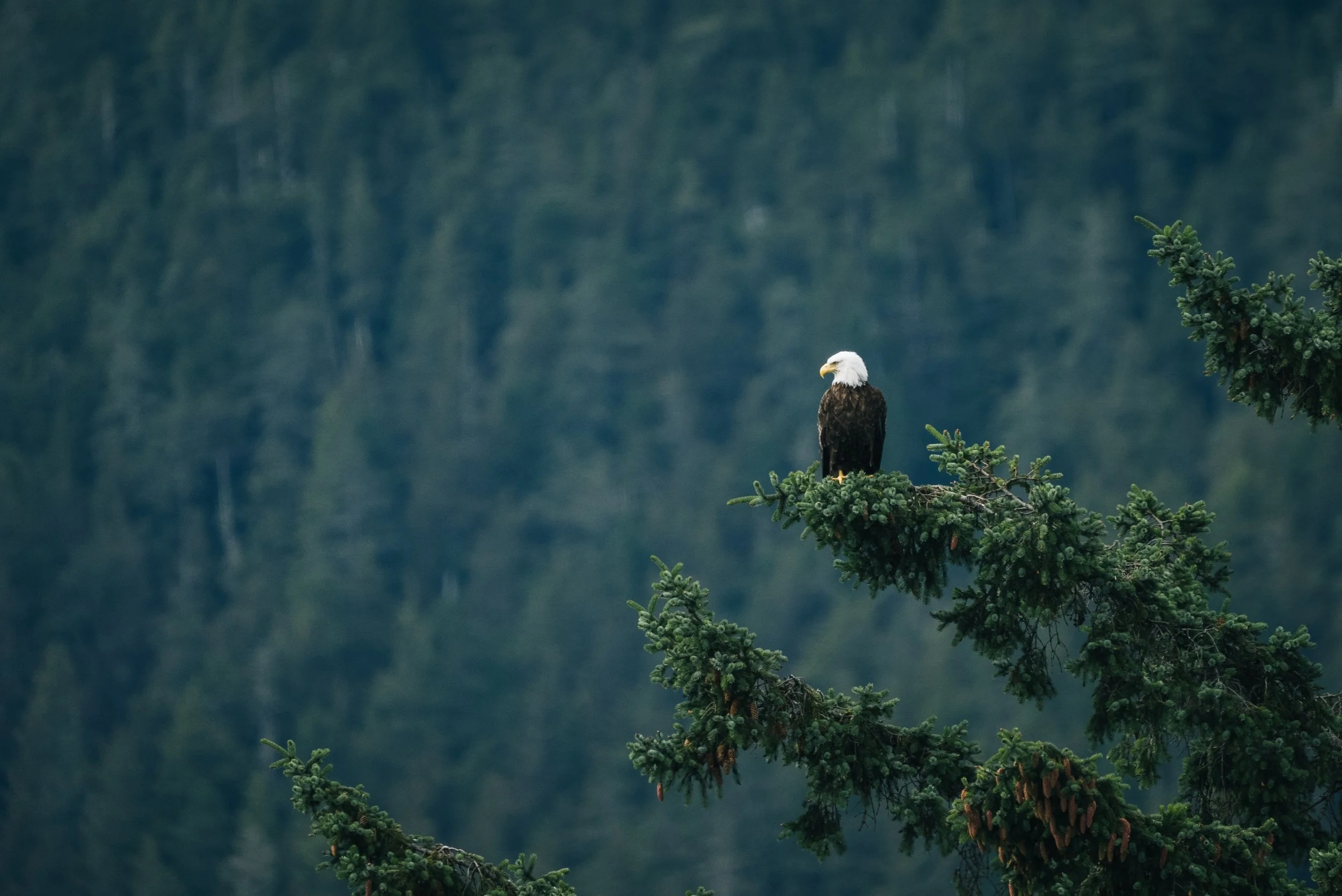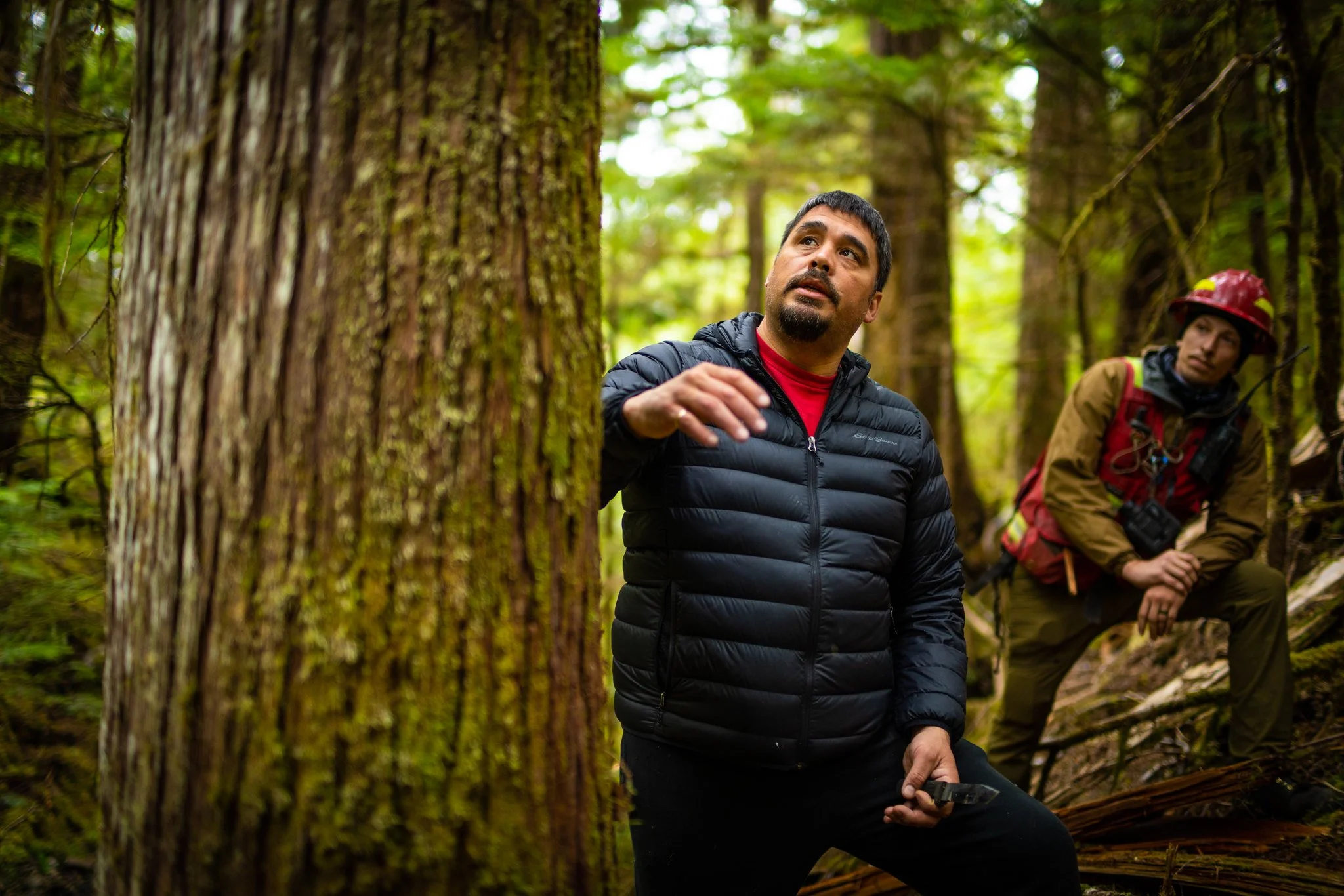
Funding the future of our homelands

The Seacoast Trust is a perpetual funding source for the Sustainable Southeast Partnership, which promotes the collective well-being and economic prosperity of Alaska Native tribes stewarding one of the world’s most ecologically important places — the coastal temperate rainforest of Southeast Alaska.
With the Seacoast Trust, we’re supporting the region’s original and current Indigenous guardians — the Tlingit, Haida and Tsimshian peoples — ensuring their lands, waters and communities remain healthy and abundant for future generations.
The Seacoast Trust — alongside Spruce Root — funds the work of the Sustainable Southeast Partnership including:
Community and Regional Catalysts: local leaders on the ground
Food sovereignty and renewable energy initiatives
Our Community
The Indigenous leaders of Southeast Alaska — including the largest regional tribe (Central Council of the Tlingit and Haida Indian Tribes of Alaska) and the largest private Alaska Native landowner (Sealaska) — have worked with conservation and community development organizations to co-create the Seacoast Trust as a means of translating Indigenous knowledge, community resilience, and collaborative adaptability into sustainable jobs and economic opportunities.
-
Yakutat is a rural fishing village located on the northern tip of Southeast Alaska. Historically, Yakutat was the principal winter village of the Tlingit clans in the area. The clans’ traditional territory is approximately the same as the City and Borough of Yakutat boundaries, which encompass 9,460 square miles. The total population of Yakutat is approximately 700 residents.
-
The community of Haines and the surrounding area including the village of Klukwan are home to more than 2,500 Alaskans. The community supports an array of vibrant local businesses and industries including a small visitor industry that specializes in adventure tourism, fishing and fish processing, agriculture and more.
-
Juneau is Alaska's capital city and the urban center of Southeast Alaska. It is the only state capital that is not connected to a road system. The wider community includes Douglas and Auke Bay, and this area includes the homeland of the Tlingit people. The economy includes commercial fishing and a vibrant visitor industry.
-
Located on Chichagof Island, Hoonah is the largest Tlingit village in Southeast Alaska. The Huna Tlingit are descendants of the original inhabitants of Glacier bay who migrated to Hoonah following a significant glacial advance that destroyed their traditional villages and summer camps within the Bay. Today, this community of nearly 900 enjoys a proud cultural identity and thriving cruise ship and commercial fishing industries.
-
Sitka is a Tlingit community on the outer coast of Baranof Island. Many community-driven initiatives exist in Sitka, including many community-driven initiatives, including a commercial kitchen space and a workforce development program that guides high school students in the construction of a tiny home using sustainable-sourced local timber. Sitka is home to just under 8,400 year-round residents with an economy, like the region as a whole, reliant on commercial fishing, tourism and government jobs. Sitka is nestled in the Tongass National Forest where families hunt, gather foods, hike, play, fish and find inspiration.
-
Nestled in Keku Strait on Kupreanof Island sits the Tlingit village of Kake. Nearly 600 people are lucky enough to call this community home — with its inspiring landscape, unique history, and flourishing culture. Kake has a long history of living in balance with local lands and waters. Most people hunt, fish and sustain their families with foods gathered by hand.
-
Kasaan means “pretty town” in Tlingit. With Kasaan located at the end of an 18-mile gravel road, access is a challenge. Despite this, Kasaan is a vibrant community with a flourishing school greenhouse, a café, annual harvesting events, an active carving and artist community, and natural splendor. A tourist industry is being developed in Kasaan to celebrate their unique cultural history as one of the last two Haida villages left in the United States — and home to one of the only traditional Haida longhouses still standing.
-
Hydaburg’s strong leadership, communal spaces, and connection to culture are helping the community heal and thrive as the largest Haida community in Alaska. The Haida language immersion preschool, X̠ántsii Náay, gives local students an opportunity to study and speak the language of their ancestors. In the community carving shed, elders and youth gather to work on community projects, practice formline, carve community totem poles, andshare intergenerational stories and knowledge.

Seacoast Trust in the News




















